If it is true that in the birth of many artists lurk the “causes” of their becoming such (Roberto Longhi said that one is born a critic, but one becomes an artist), it could be said that for Leonor Fini the familyimprinting was the reason for her entire creative life, an eventful and long life, full of challenges and recognition, some ninety years spent among images and ghosts. The exhibition that Palazzo Reale dedicates to her until June 22 (catalog edited by Tere Arcq and Carlos Martin) is designed to “represent” her character and the title follows: I Am. Leonor Fini. An expression of the protagonist herself, who poses and perhaps, in her own way, was indeed a “sorceress goddess.”
But let’s go from the beginning. Leonor was born in Buenos Aires on August 30, 1907. The family was in Argentina because her father, Erminio Fini, was the son of parents from southern Italy, who had emigrated from the Benevento province to the South American country; her mother, Malvina Braun Dubich, on the other hand, was born in Trieste, and the family roots were in the Central Europeanhumus, German and Slavic but also Venetian, because of the various family ramifications. Leonora’s life, at just one year old, took on the rhythm that she would retain even as an adult: her mother, not tolerating her husband’s authoritarian character and adulterous propensities, took the child and returned to Trieste. By now a well-known artist, Leonor confesses that she has always liked to dress in other people’s clothes, to disguise herself, indeed going so far as to say that “if people were free, they would all be androgynous.” But in reality, masquerading and dressing up in other people’s clothes was, from the very beginning, a survival strategy, which over time generated forms that were apparently playful but actually expressed her elaboration of the “perturbing” in the proper Freudian sense.
Surrealism, where she would set her feet for a few years, thanks to Max Ernst, arriving in Paris in 1931 earned her friendly, sentimental and cultural ties with some of the major exponents of the movement (without ever espousing its will in full); it was, in short, the propitious context for a figure who has always walked on the border of ambiguity, of the different, of the mysterious land where symbols reveal the double that lurks in human realities. It is a psychic dimension rooted in her mother’s habit of dressing her as a male whenever they put their noses outside the house, to escape her husband’s various attempts to kidnap Leonora. That is why living en travesti will be one of the expressive figures of Leonor, who in her work also made, for about two decades after the end of the war, studies for theatrical sets and costumes, for ballet and opera moving between London, Paris, Rome, and working for the cinema (she was awarded in 1954 for the costumes of Juliet and Romeo) but also producing clothes forhaute couture brands.
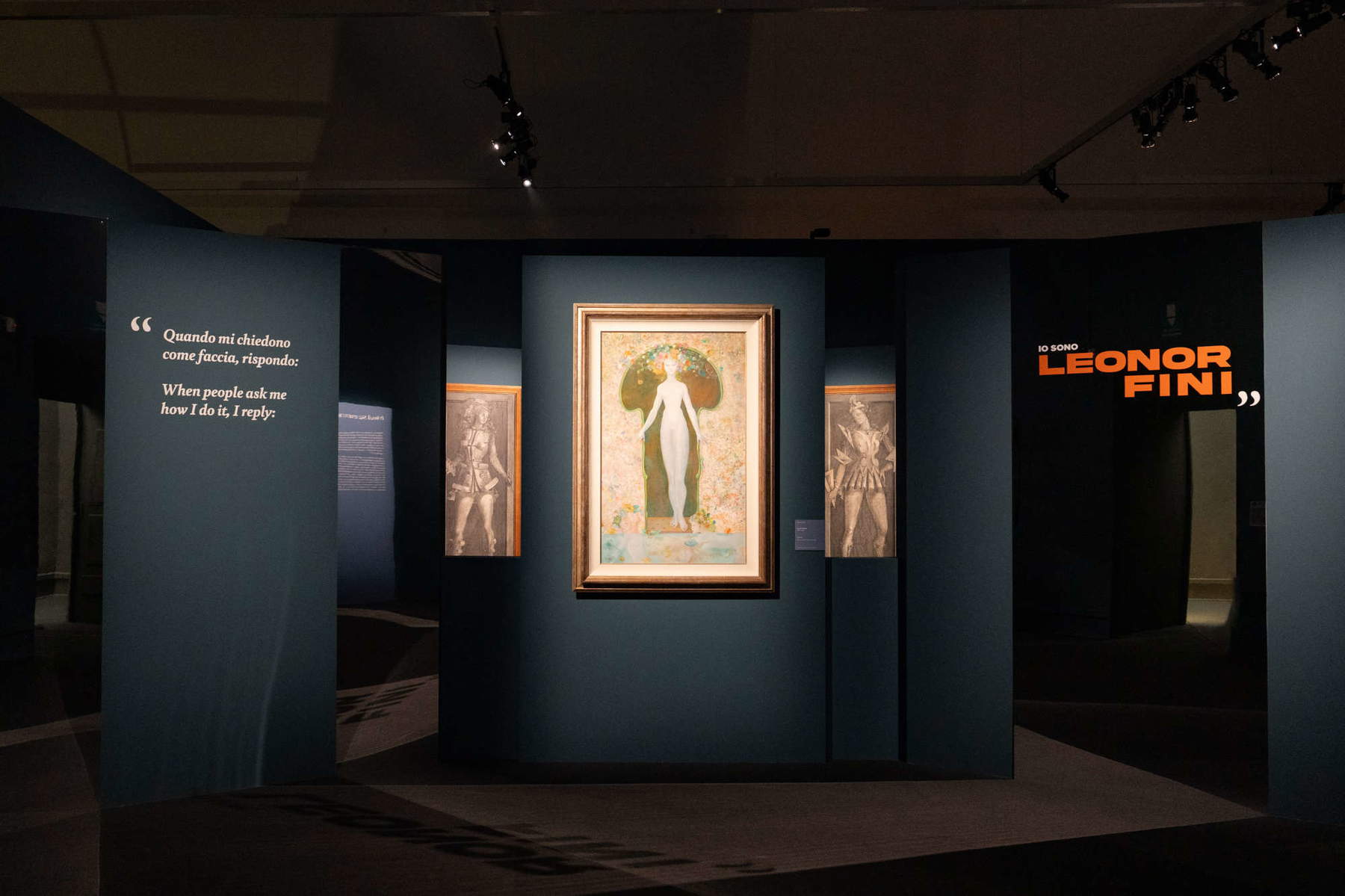
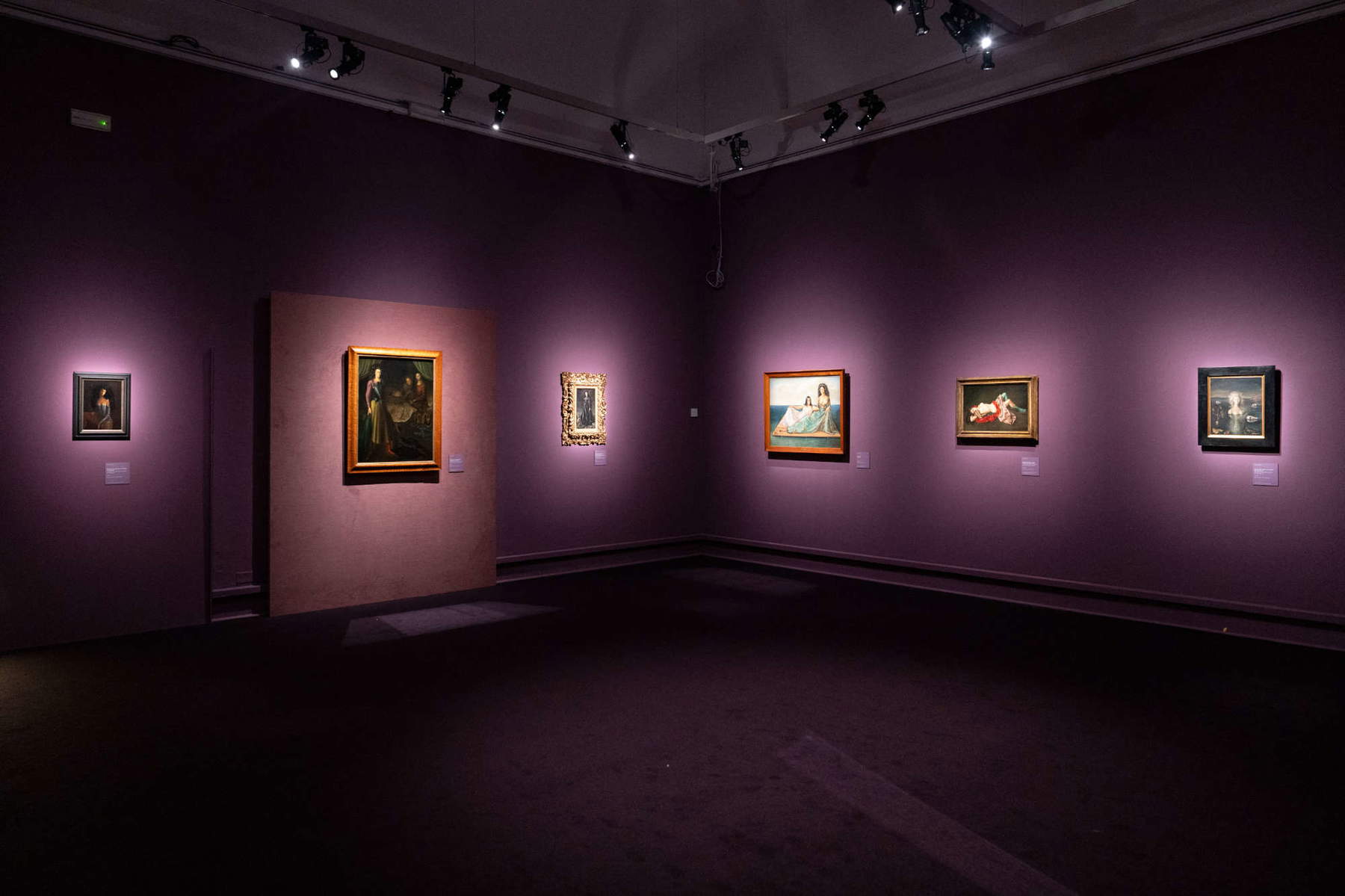
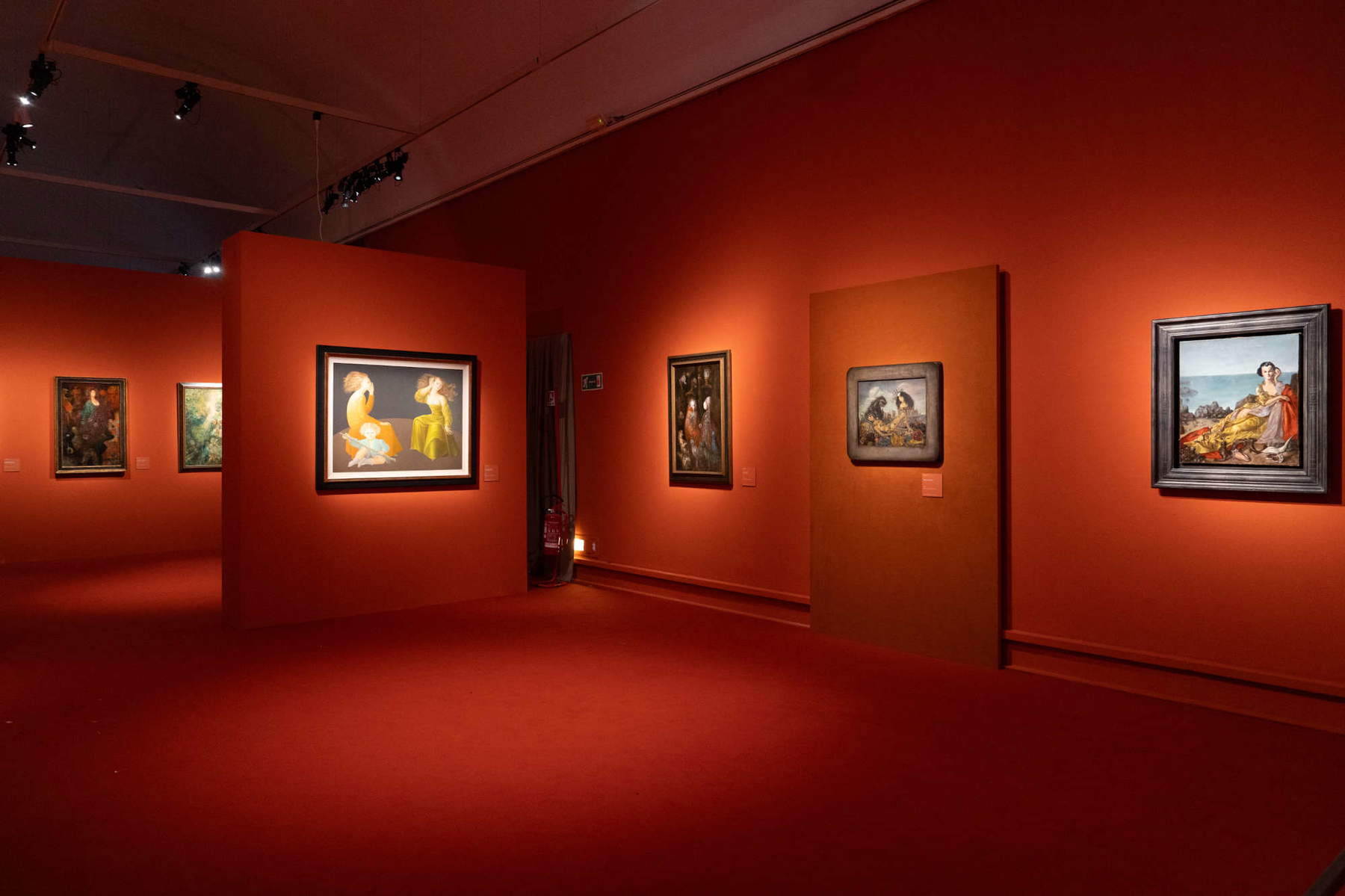
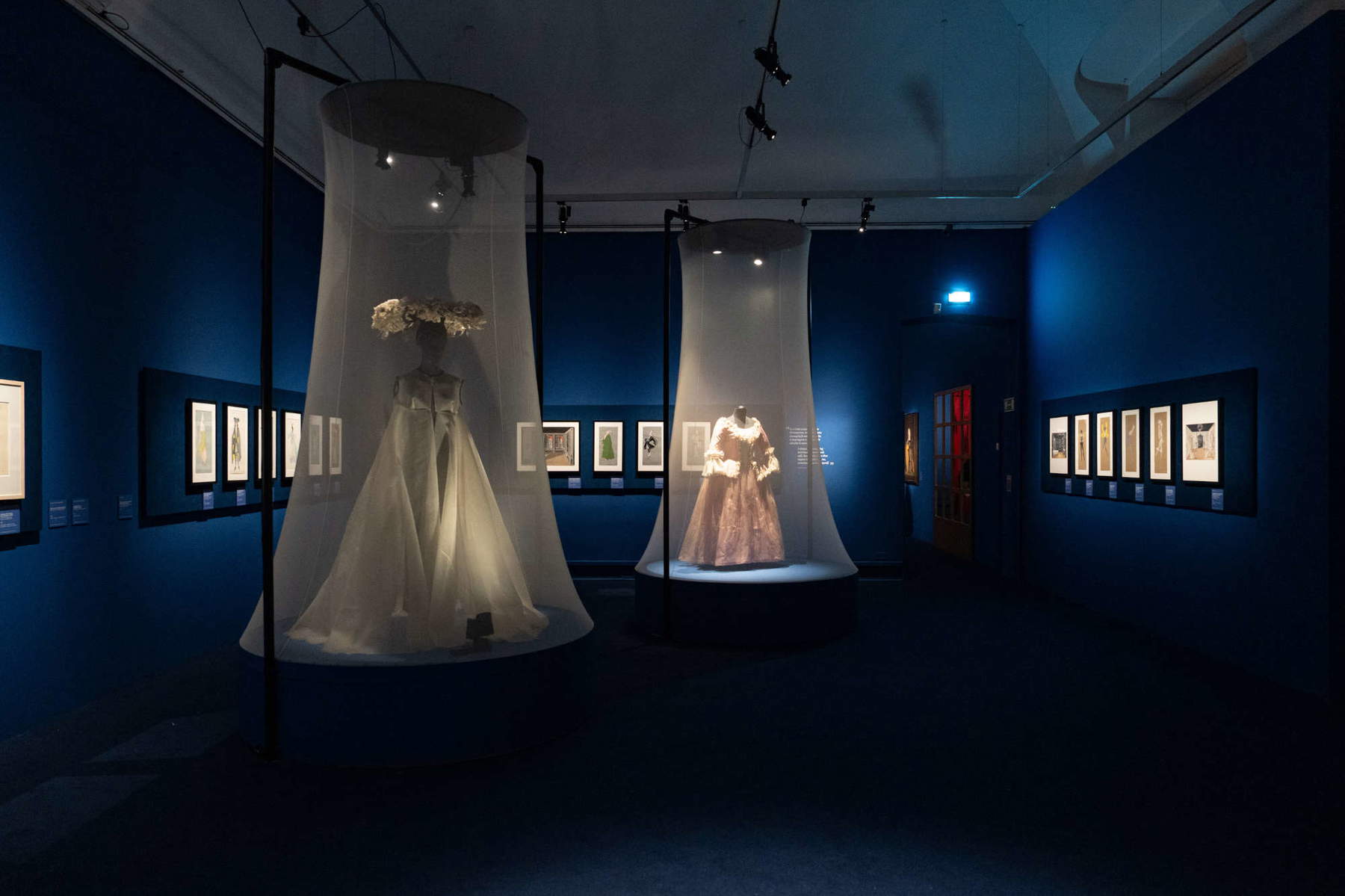
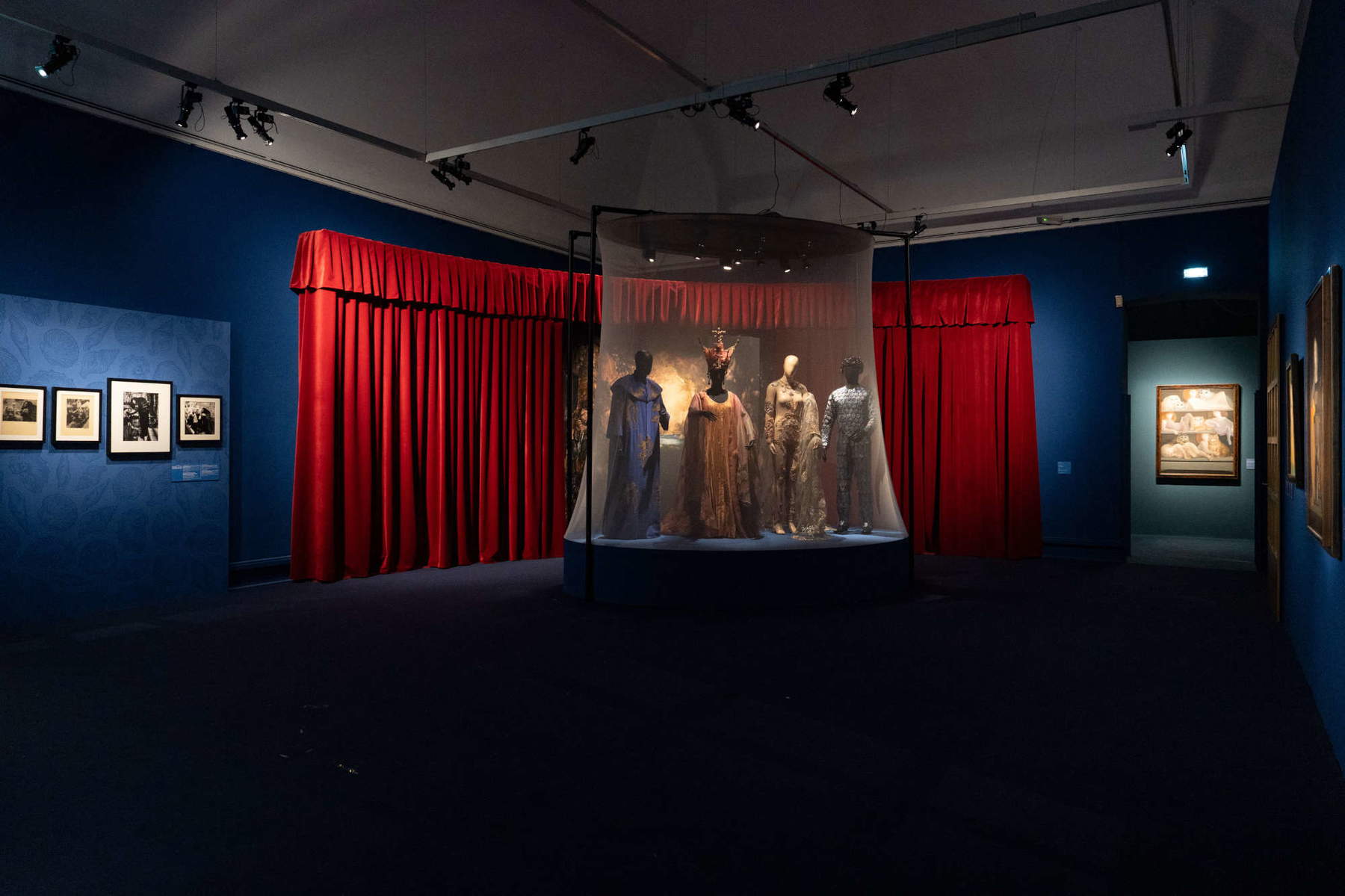
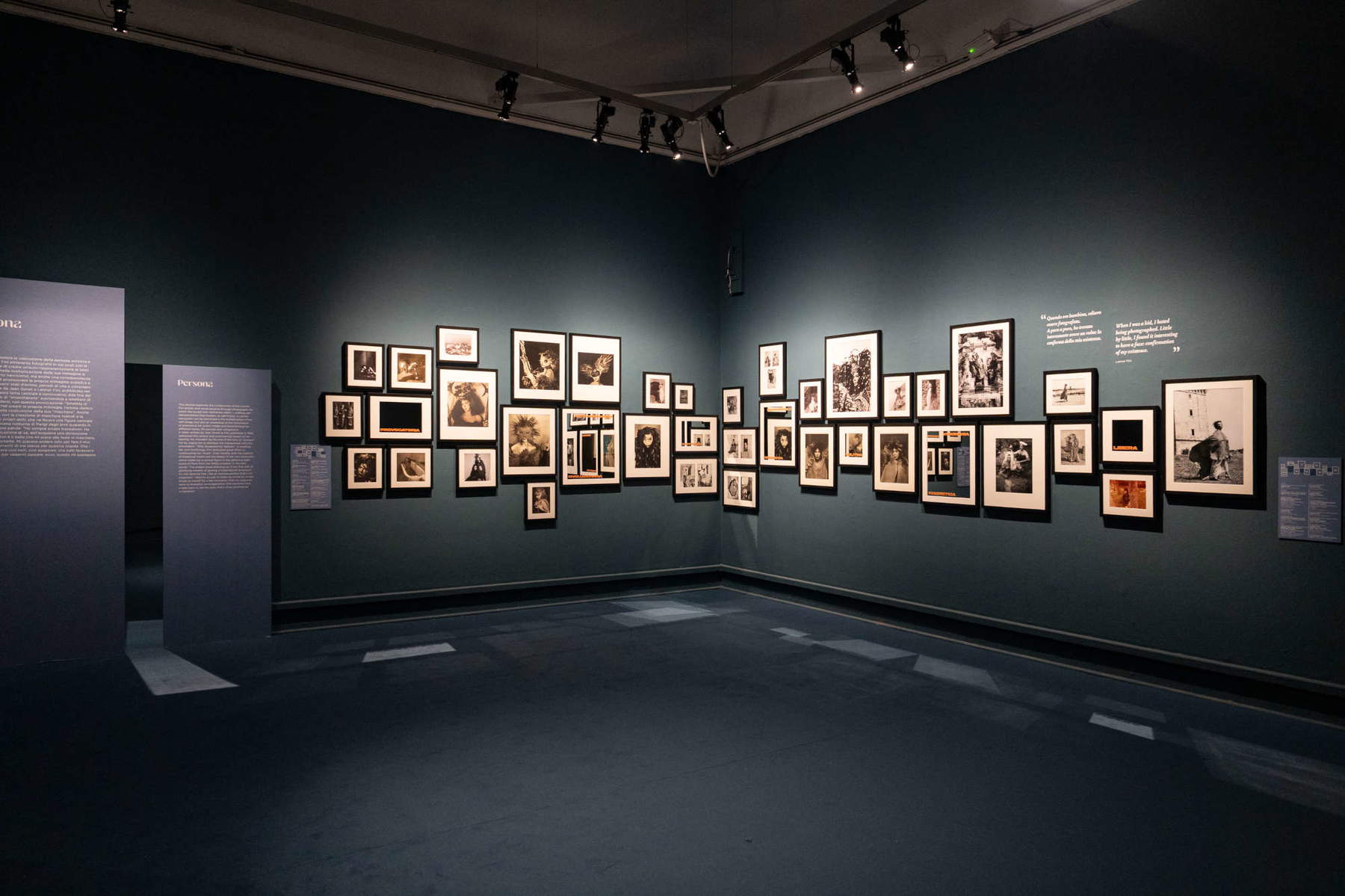
The rest comes from the social conditions in which the girl would grow up, that of the Central European bourgeoisie (in her early twenties, among others, she would meet Joyce, Svevo, Saba, Gillo Dorfles and Bobi Bazlen, the inspirer in the 1960s of Adelphi editions, whom she would meet several times), which would expand to the Roman and Parisian milieu. And if one dwells on his manifold artistic imagery, which rises from the depths of archaic lands, the reference to his father’s beneventan ones, cultures with still primordial myths, where the woman is a uranic being and, as a sorceress, a conduit to the “beyond,” is legitimate.
Ernesto De Martino’s investigations have excavated the archaic traditions of a world populated by witches and mythical animals. Benevento is a land of sabbaths where Lucifer, showing himself as a goat, attends the wild dances of witches and other demons. These rituals had as their symbolic center a gigantic walnut tree above which hovered monstrous beings and women riding brooms (tradition also records some of their names including that of Mariana da San Sisto, unjustly accused of rituals and infanticide at the very foot of the walnut tree). In Benevento, former capital of the ancient Lombard duchy, a temple to the goddess Isis was erected in ancient times, and oriental cults, those investigated for example by Franz Cumont over a century ago, led to the construction of a mithraeum. Thus ancient traces were mixed with Roman deities and other myths whose subjects were Mithras and Ceres, Demeter and Isis, Diana and Pan. Pagan deities that the arrival of the Lombards also thwarted by opening up to Christianity, while preserving some pagan inclinations that were preserved by popular cultures.
I will not go into the specifics of the remarkable issue concerning the archaic permanences of the Campanian territory, worthy of similar in-depth studies to those of the Warburgian school; I will simply note that in this context the figure of the witch and sorceress women, prevailing Christian worship, will be harshly fought. But De Martino himself anthropologically framed the use of magic not as a mere legacy of superstition, rather as a “useful” element to counter critical transitions from archaic cultures and identities to the turning point of Christian “civilization.” The woman sorceress was, in this situation, the mediator with the supernatural world, administering remedies that could come from natural elements, such as herbs. She was, precisely, a “cultural” form, whose role was that of a bulwark of ancient sacred and mythical customs in the face of maturing turns in the sign of a modernity hostile to paganism. De Martino’s research thus critiqued the prevalence of demonic prejudice that hung over the image of the witch, while also highlighting the role they exercised as “thaumaturges” in Campania and Lucania overwhelmed by the advent of the new cult. No longer only sabbaths and satanic dances, then, but also social pharmakon: the Greek word resolves in itself the double meaning of both poison and cure, of which the witch and the sorceress are expressions.
Leonor Fini since her first trials as a “perturbing” (but primarily “perturbed”) artist has claimed to herself the figure of the witch and, in her most provocative moments, also that of the strix, thenocturnal bird of ill omen, by dressing in dark clothing, as she appears in André Ostier’s 1951 photo, where she is immortalized at the Beistegui Ball in Venice while wearing the guise of theBlack Angel. Also approaching these is another legendary figure, the Sphinx, wise and prophetess, frequent in her mature paintings (one of her most famous, Shepherdess of the Sphinxes, was purchased by Peggy Guggenheim).
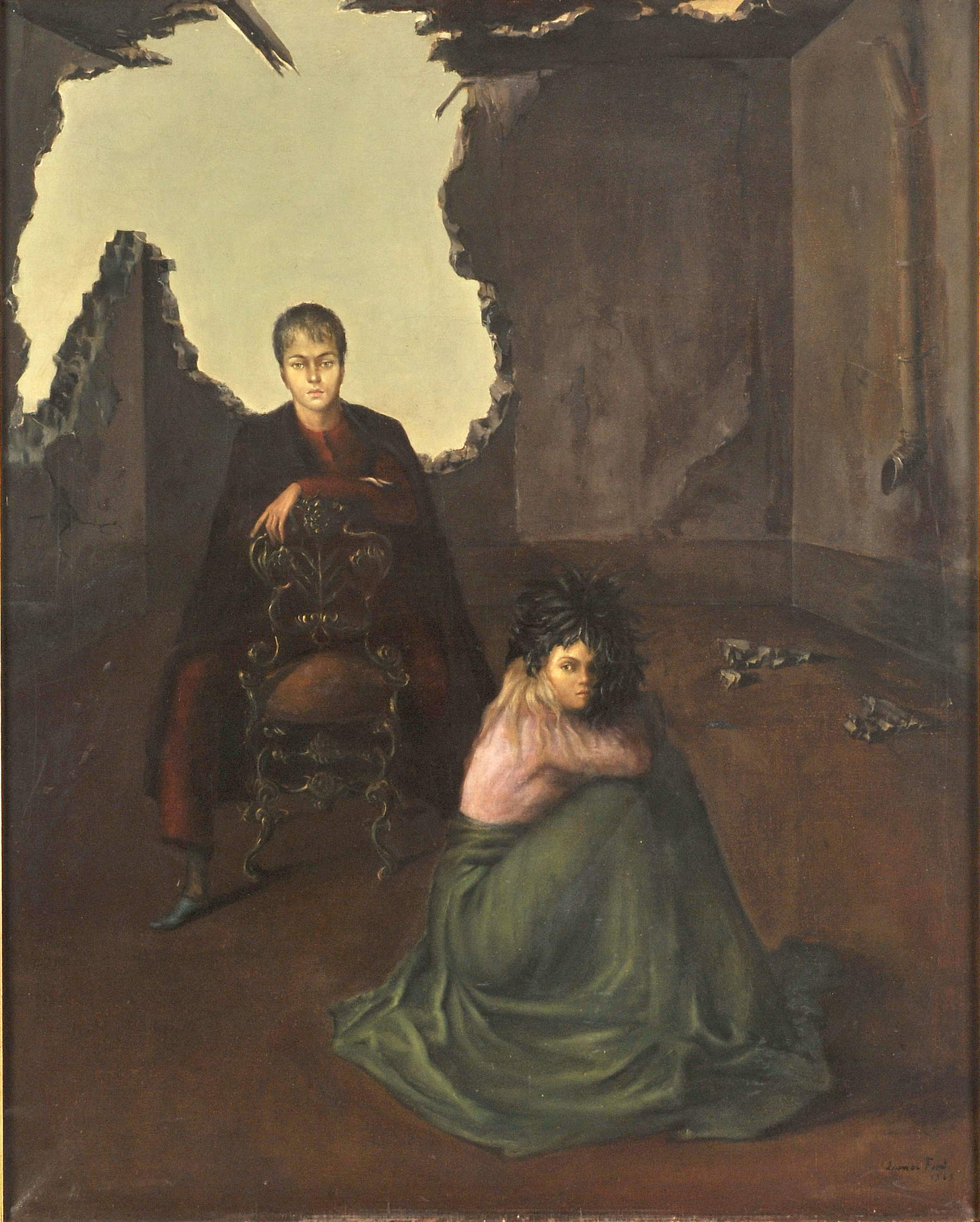
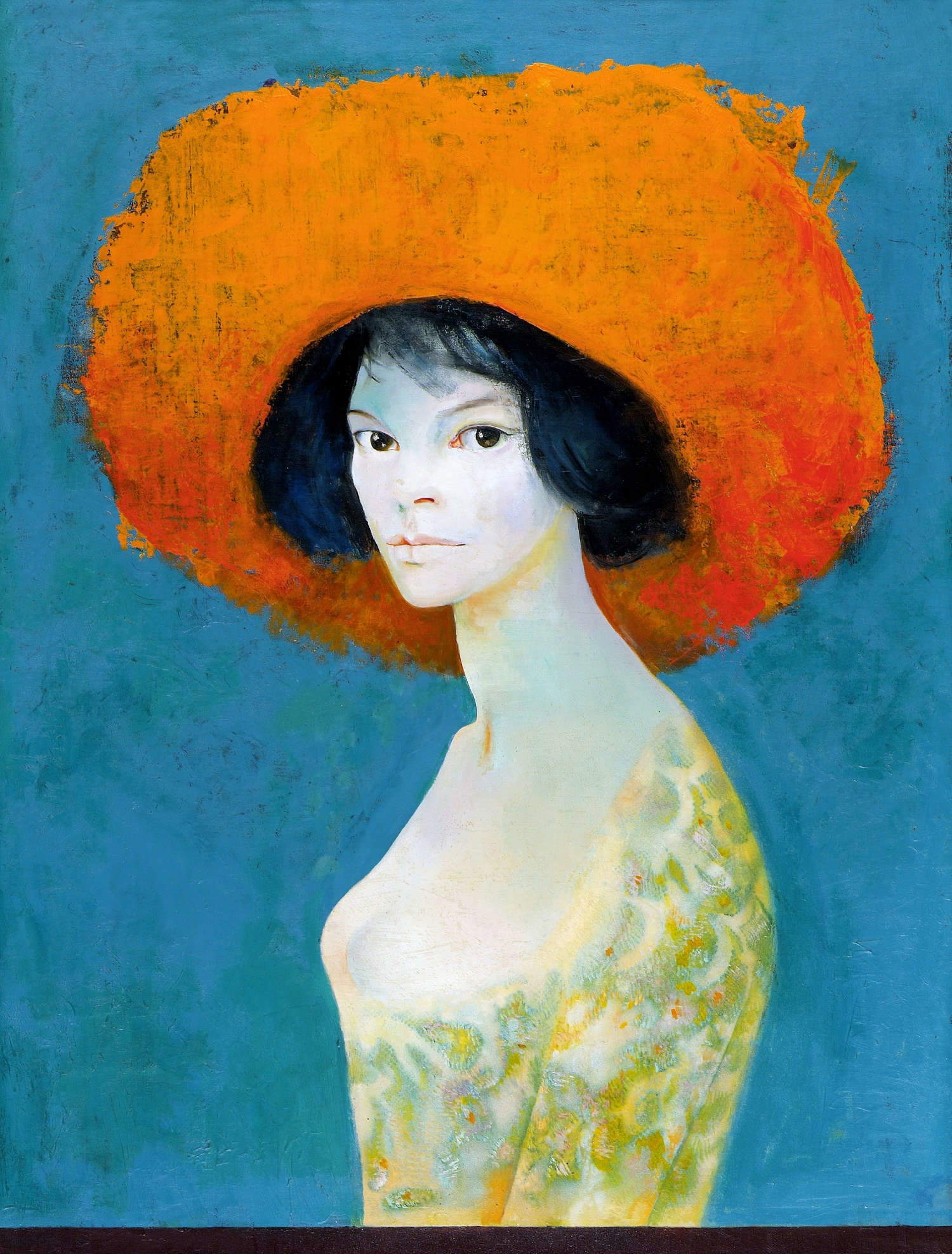
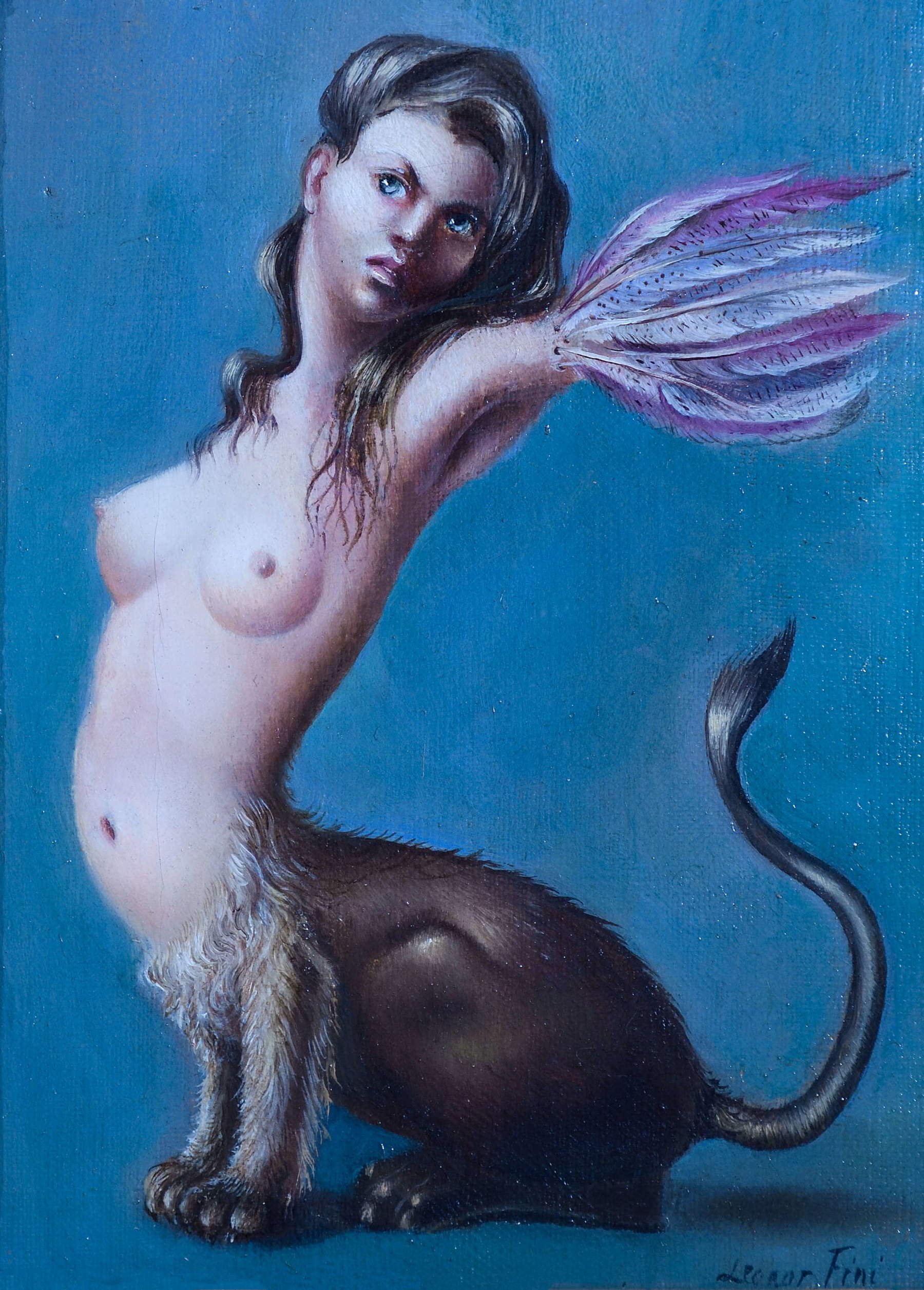
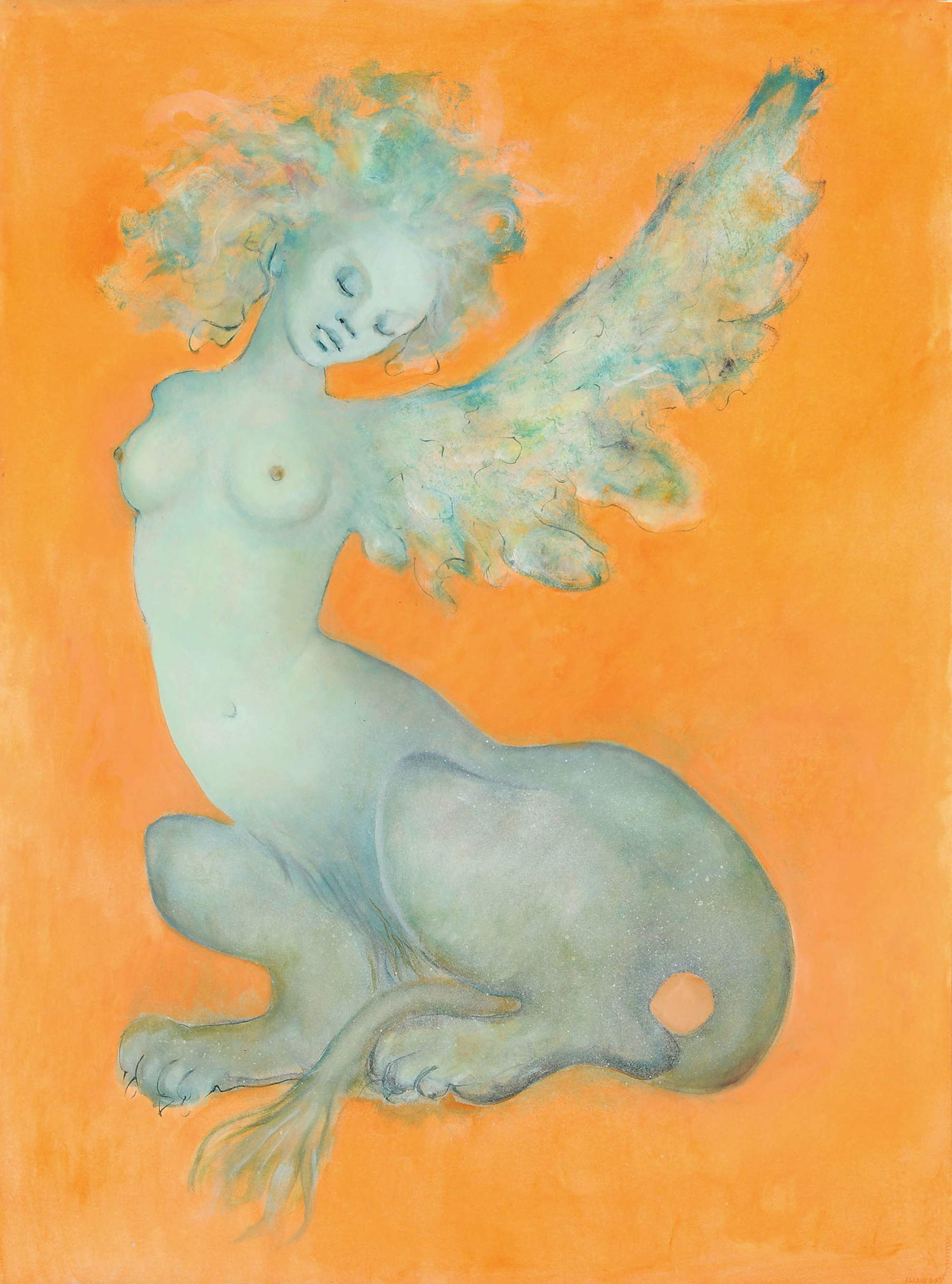
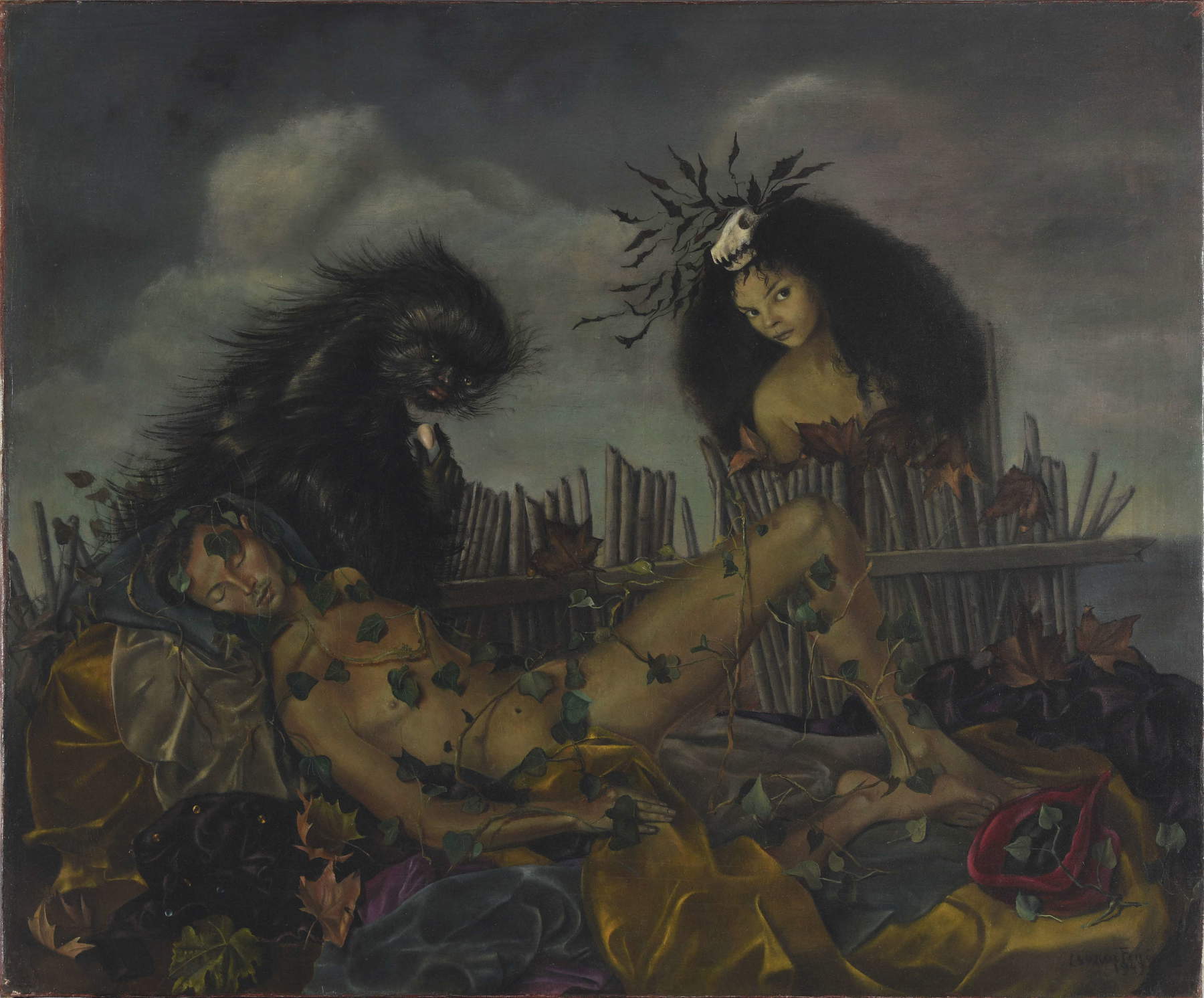
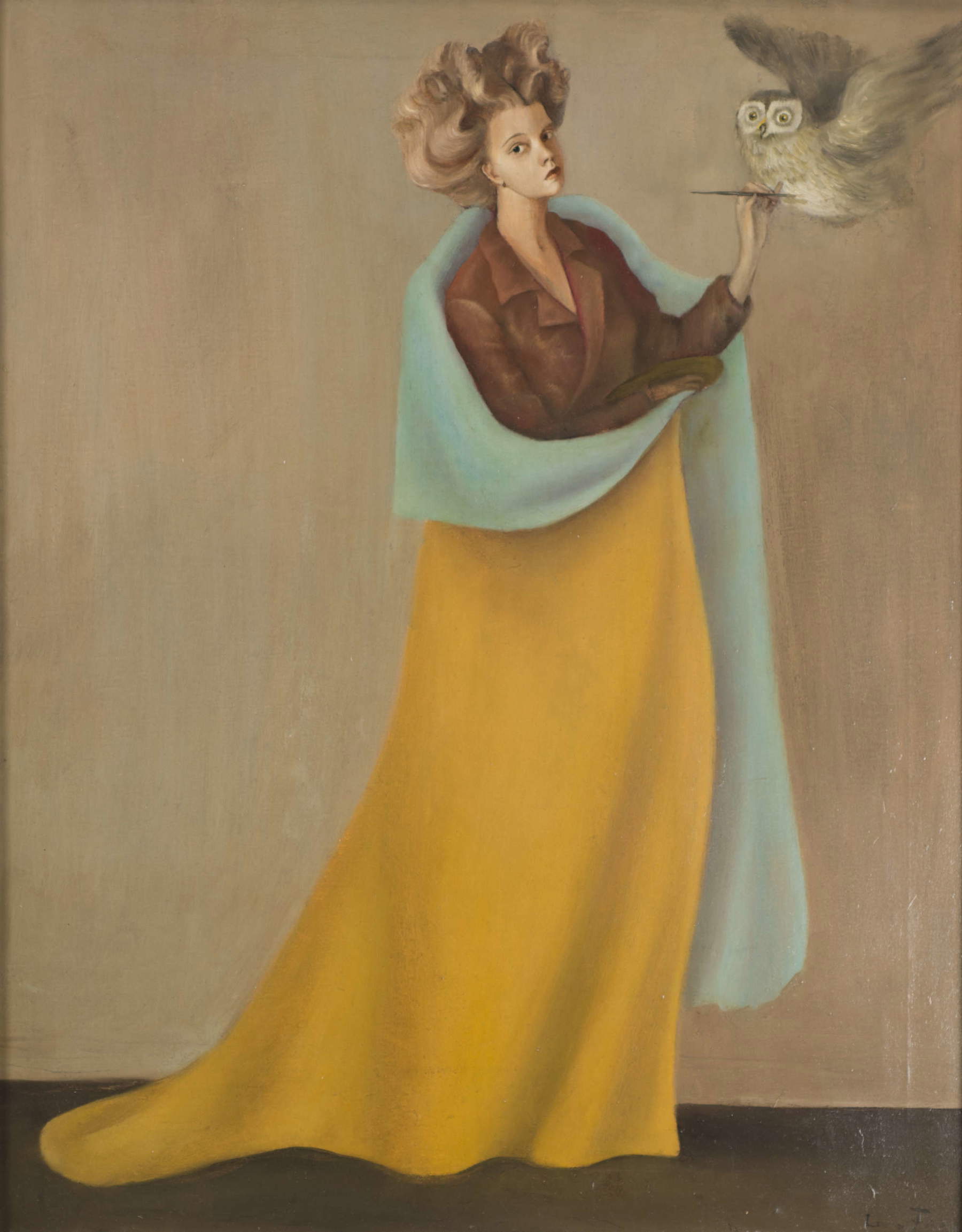
While still a child Leonora scattered drawings and caricatures in her school notebooks, which already had mysterious aspects; a precocious artist, as an adult she only developed a vein within which ran that acid blood that brought transgressive and nocturnal images to her mind. From the start appreciated, figure-masks take shape in the drawings that do not express an external truth, that of the real world, but ghosts that inhabit the depths of the artist, where imagination is the poison that Leonor elaborates into medicine for those who linger in front of her paintings, as if witnessing her daydreams.
She held her first eye-catching exhibition in Milan, in 1929, at Vittorio Emanuele Barbaroux’s Galleria of the same name, and it astonished precisely because of the scenes that evoked dark worlds. He would attract the attention of painters such as Carrà, Sironi, Giorgio De Chirico, who would later sign the catalog of Leonor Fini’s exhibition at the Julien Gallery in New York in 1938; and Achille Funi, with whom he would bond for a while, living a professional and sentimental relationship with the Novecentist painter, so much so that he followed him almost immediately to Paris. One can also imagine that the atmospheres of Milanese Novecentism made the rhetorical climate unbreathable for her, and for this reason she left Milan after only a year. One thing, however, her Milanese sojourn and ménage with Funi would leave her with: a sensitivity to classical culture, its myths and iconographies, and an interest in 15th-century painting. Leonora is a cultured artist, quick to elaborate forms and images that provoke her to reveal herself on the scene; and from these frequentations she will mature that enduring stylistic tone that has much to do with the alchemical principle that governs the meanings of natural and artificial things, the essential food of the Wunderkammer.
This is what we see in a painting titled Le Bout du monde from 1948: it depicts a lunar world, a passing liquid earth, on the surface of which animal skulls peek out, looking like guardians of Hades. Arboreal ramifications grow and encircle walls, plant or animal fossils, woods, as well as the bodies of women and men, on which proliferate spores and fungi of which it is not necessary to specify that they are endowed with hallucinatory powers; and again: butterflies, peach trees, shells and eggs with marbled shells. It is a vision of the beyond where death possesses an unquestionable charm that “bewitches.” Many of his postwar paintings look like lakes of sulfurous waters in whose bath every reality changes face, in a continuous alternation between presences of myth and poupées that appear to us as fetishes of a world that seems the reverse of the Olympian condition of the gods.
From World War II to the first post-war decade, Leonora elaborates worlds where the archaic prevails as a relic of things that have now reached a fossil, symbolic or allegorical peace, thanks to the antidote extracted from the imagination, which hardens everything to its mineral state and seeks to realize the symbiotic condition of a new dimension of life where the act of disguising gives the character a fictitious identity, thanks to the artist’s obstetrical gaze. See the portraits of real people who transform into demonic beings at a witches’ ball that belies the Excelsior Ball optimism dominant until the first half of the twentieth century. Leonor Fini would thus become the transgressive entertainer of the Parisian beautiful world, and would be sucked into the riot of masked parties that dominated the capital, her elective homeland, where she would die in 1996, having celebrated in every way an extreme vitalistic game.
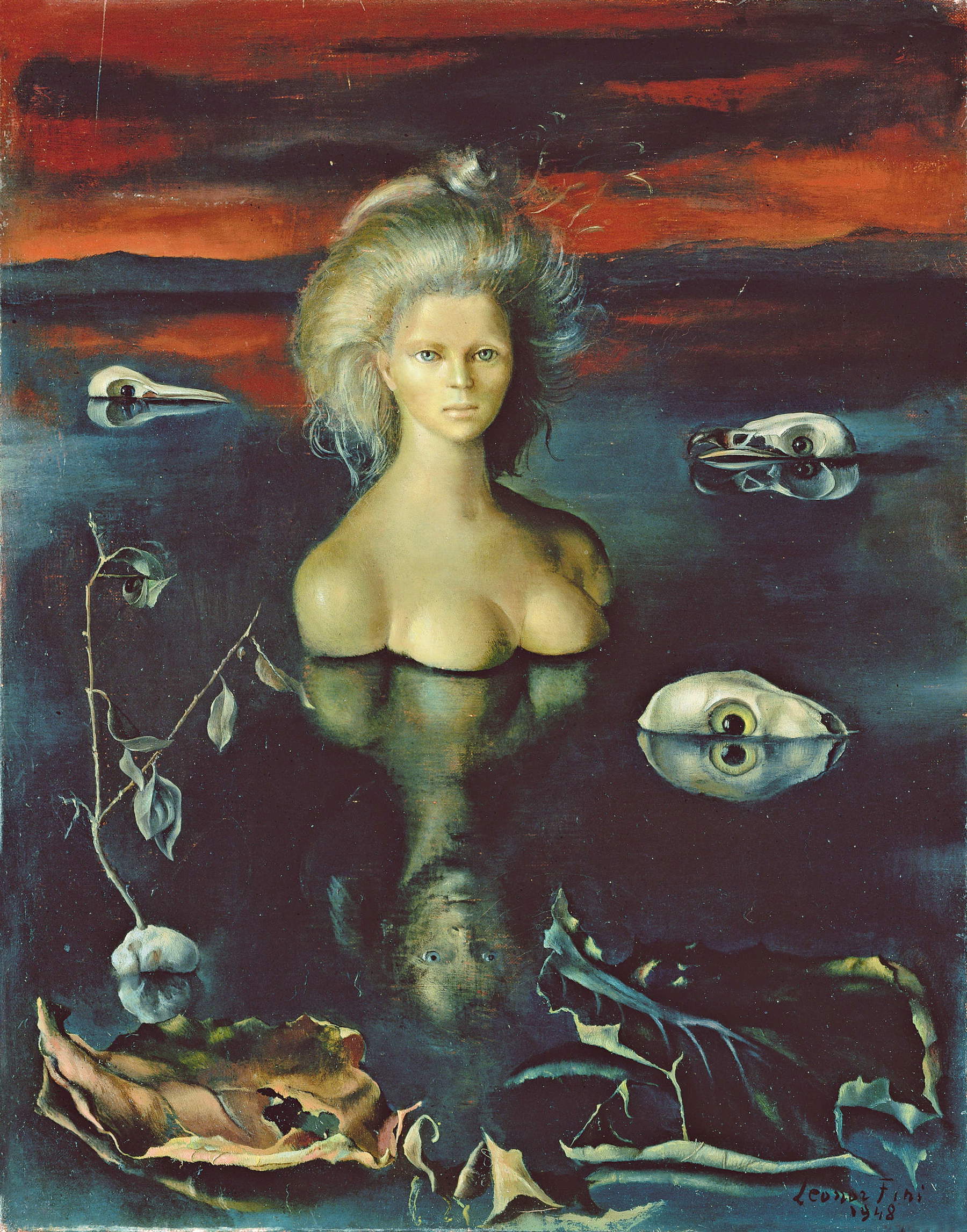
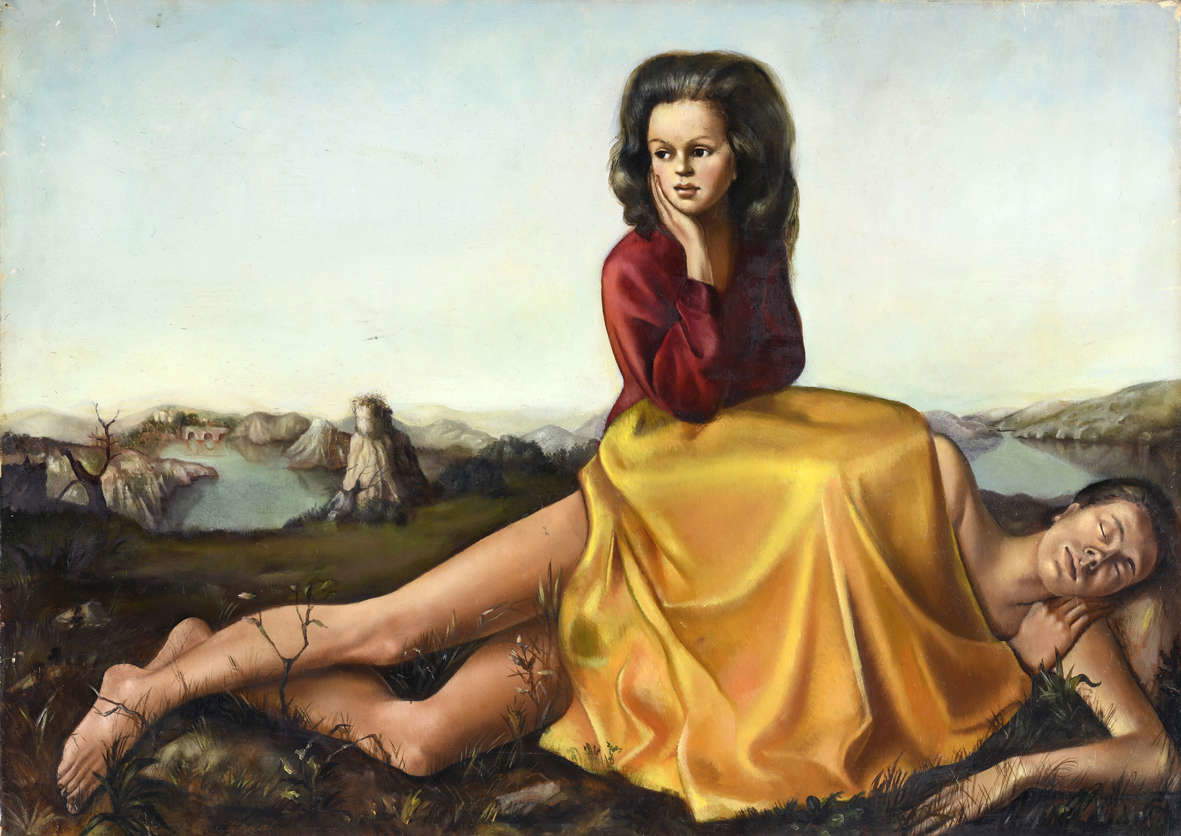
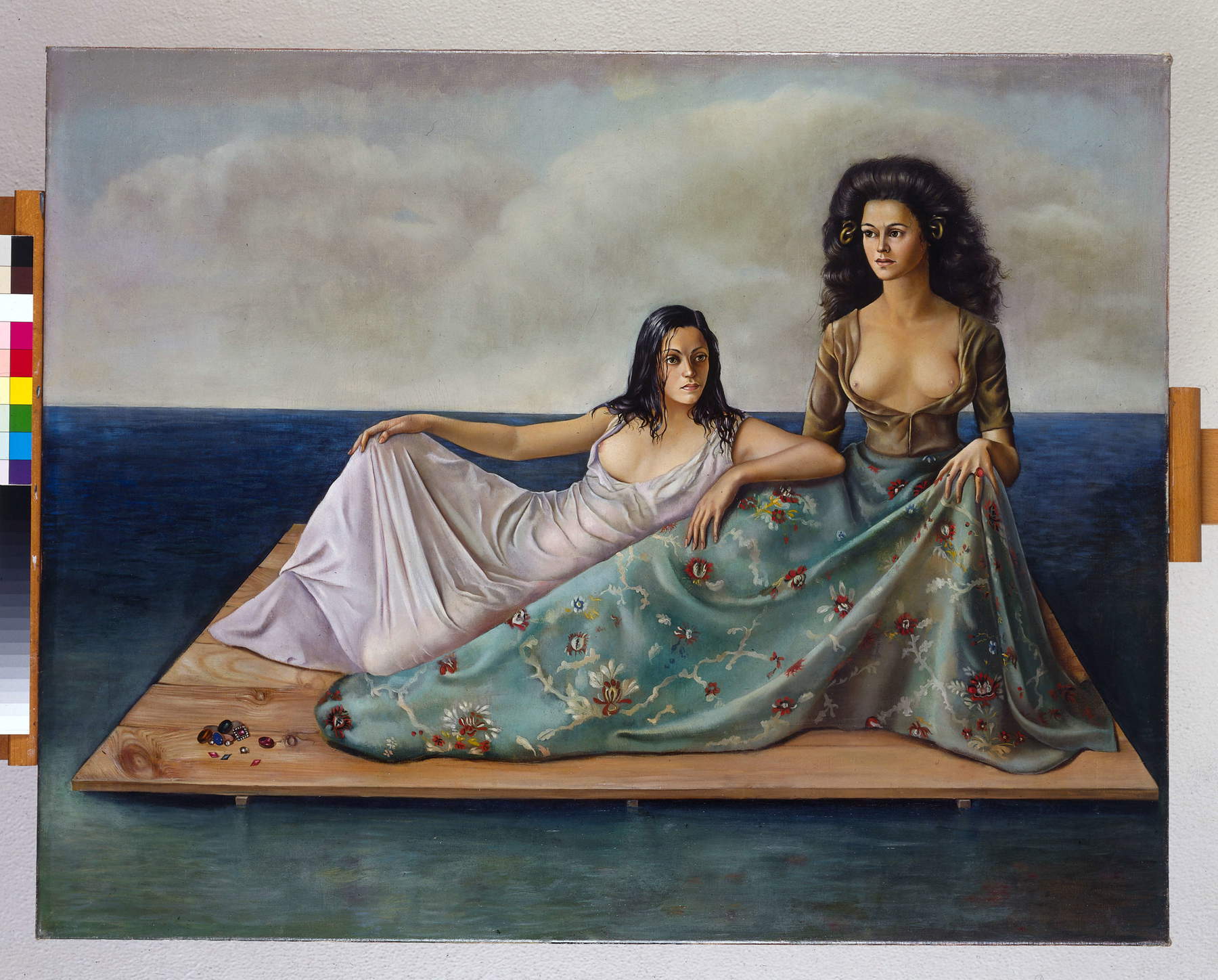
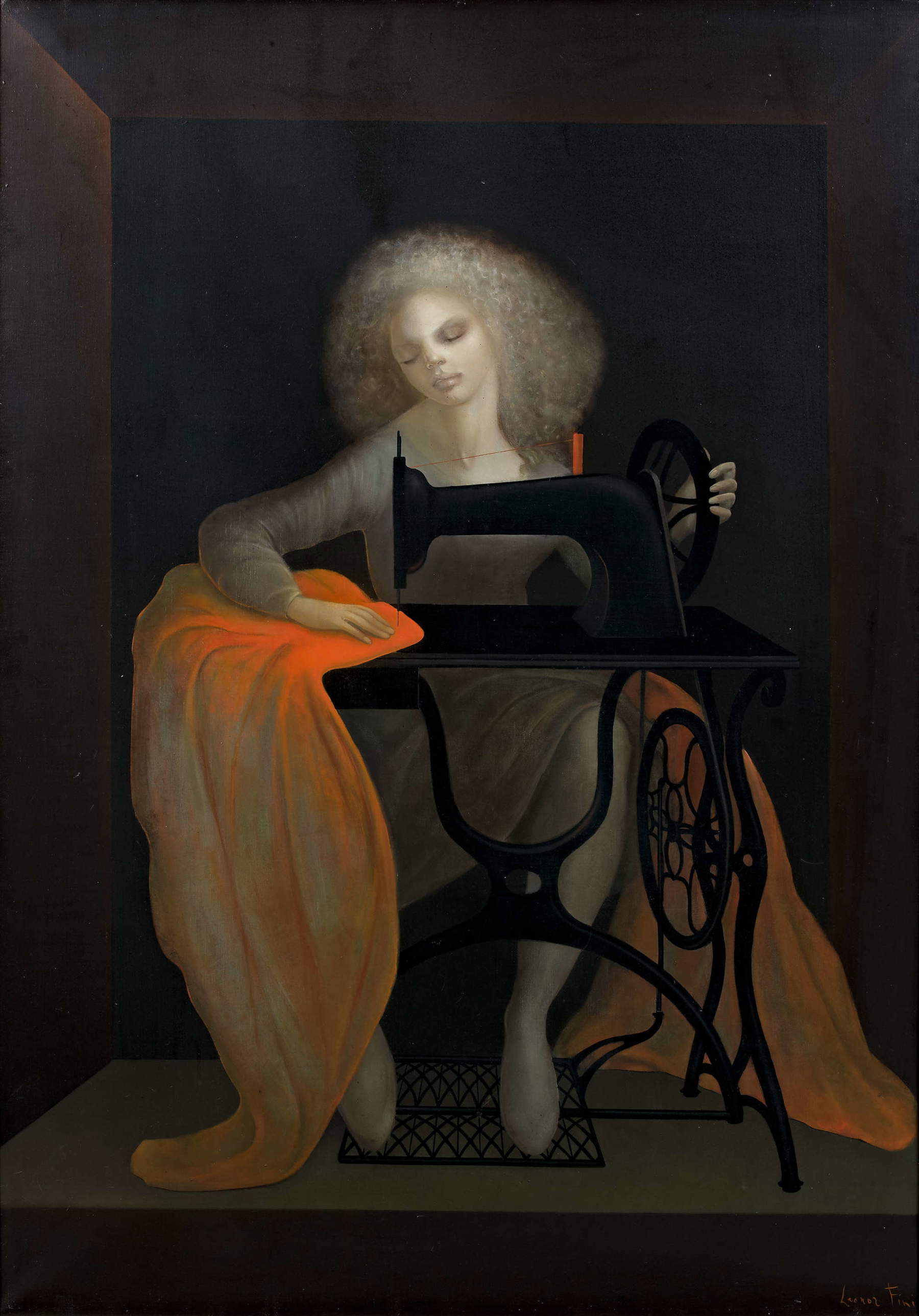
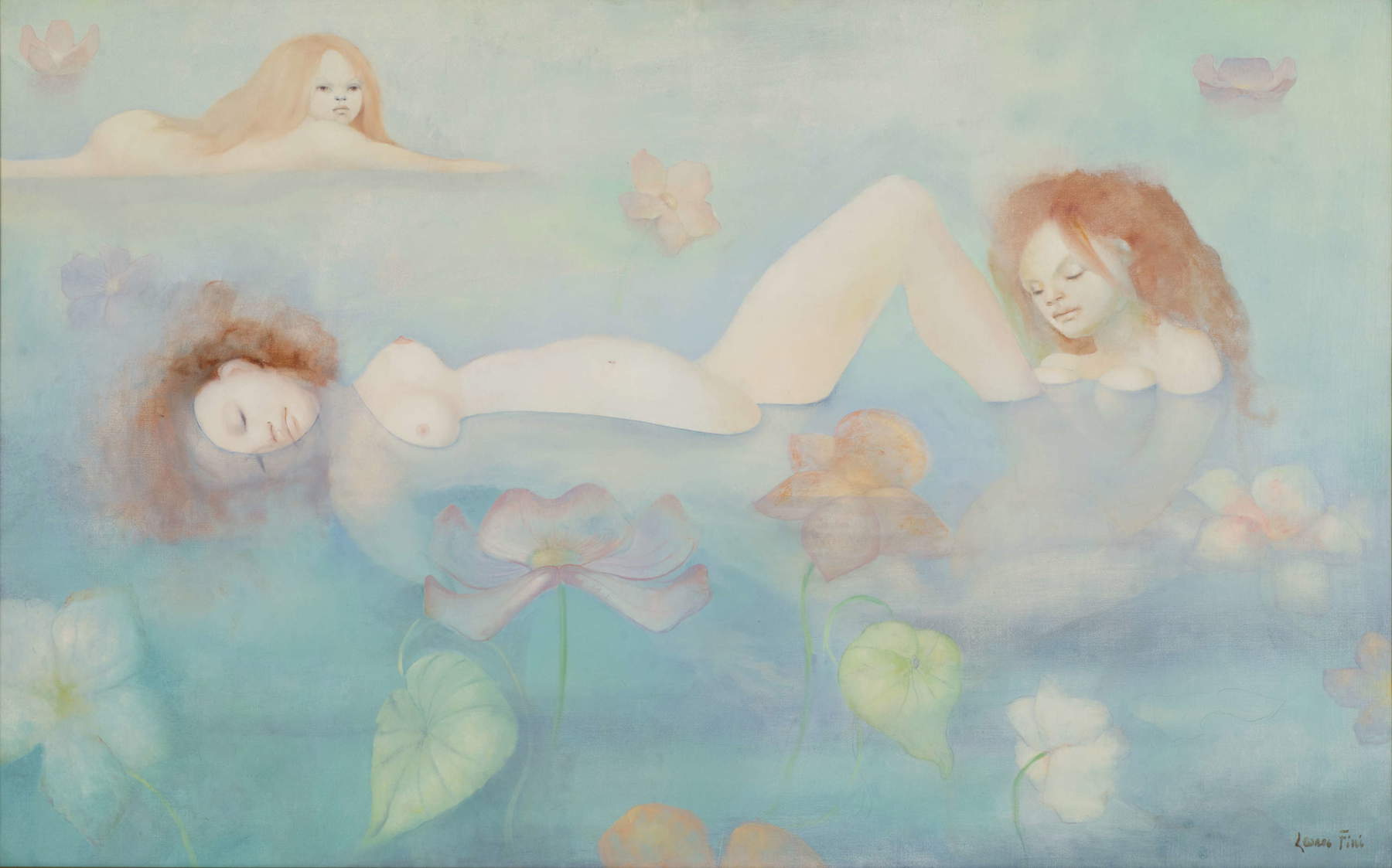
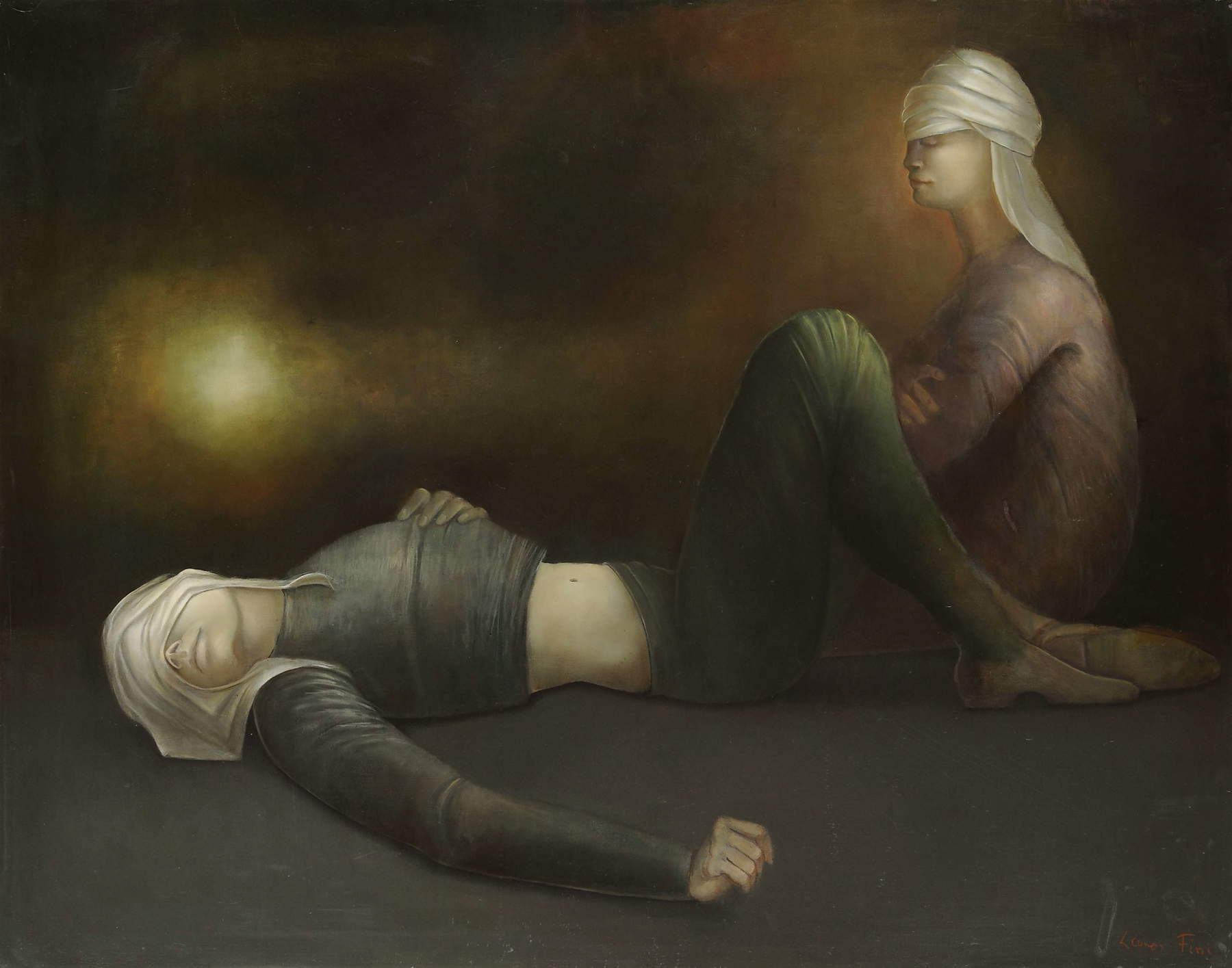
The sorceress Leonora is actually a mediator of earthly worlds projected into the underworlds levitating in her mind: a female identity that in turn feeds from the earth and gives birth in herself to the plant that will envelop bodies, hers and those of characters such as androgynous males watched over by chthonic deities and sphinxes. Her ideal companions on the road, Dorothea Tanning and Leonora Carrington, interpreted with élan the new age of women in art, which in 2022 was witnessed in Venice by Cecilia Alemani’s Biennale and the exhibition at the Guggenheim Collection with the exhibition Surrealism and Magic, where a large percentage of the works exhibited were signed by women. The risk today is to give this “mental” space a feminine intonation (sorceress, witch, medium, astrologer, are all easy associations with a matrilineal line of thought), as is clear from the room-crypt set up by Cecilia Alemani of composing a kind of feminine archeology of the mesmeric, hysterical and somnambulistic space of modernity. But as early as 1912 Valentine de Saint Point in the Futurist Woman’s Manifesto argued that “it is absurd to divide humanity into women and men: it is composed only of femininity and masculinity...for every woman must possess not only feminine virtues, but virile qualities, otherwise she is a female. The man who possesses only masculine strength, without intuition, is but a brute.”
Leonor Fini makes me think, by the way, of Frida Kahlo, of her tangle of arboreal vessels that rise from the earth wounded by man and graft, suck sap from the body of the artist, whose tears, however, are not balms that soothe the pains of the poor christians who succumb there where there is no room left for Demeter or Isis. Leonor’s worlds are infinitely more “fake” and distant than the ones Frida knows, the female condition is in these lands a sacrificial vow that opposes the society of ’elegance and luxury, a dream where cats, fairies and spirits play the part of “beings” endowed with a freedom that humans seem denied (Max Ernst would call Leonor’s visions “vertigoes and chasms”).
In the French capital, her temperament tested from a young age on her ability to counter dominant machismo will ensure that Leonor never joins the Bretonian group, although in 1936 she participated in the famous exhibition Fantastic Art, Dada and Surrealism at MoMA in New York. Leonor’s fate paved the way for her to be one of the most glamorous artists sought after by good society, thanks in part to her meeting, who knows if by chance, at the café Les Deux Magots with Christian Dior, who invited her to exhibit in his gallery founded with the great collector and dealer Jacques Bonjean. Leonor thus became one of the most present figures on the Parisian cultural scene, and her ability to devise not only costumes and clothes but also objects led her to work for Elsa Schiapparelli to the point of designing the Shocking perfume bottle inspired by the iconic Mae West.
In graphic works Leonor gives better proof of herself, while in painting she always remains on a safe margin that is that of narrative, even when the subject is a simple portrait without “accessories,” which despite the dreamlike vein on the artistic level makes her essentially an illustrator: not a visionary but a dispenser of fantastic scenarios, which also take shape in her graphic work, which is far from marginal, for numerous literary texts (about a hundred, including Baudelaire, Flaubert, Sade, Shakespeare, Genet, Pieyre de Mandiargues), exhibited in large part in the exhibition dedicated to her in 2009 by the Revolterra Museum in Trieste, where her verve excelled has later influenced artists of later generations such as, for example, Luigi Ontani. Décalage between sign and painting that reinforces the weight of a fantastical illustration in which she mentally encloses herself, what will never happen to her fellow artists: Achille Funi, Max Ernst or Fabrizio Clerici, to whom he will address a thousand letters; Lepri or Colombotto Rosso, whose macabre grotesque, also inspired for a time by Cottolengo, cannot by necessity be reduced to the illustrative, but is tragic as a reanimated fetish.
Warning: the translation into English of the original Italian article was created using automatic tools. We undertake to review all articles, but we do not guarantee the total absence of inaccuracies in the translation due to the program. You can find the original by clicking on the ITA button. If you find any mistake,please contact us.